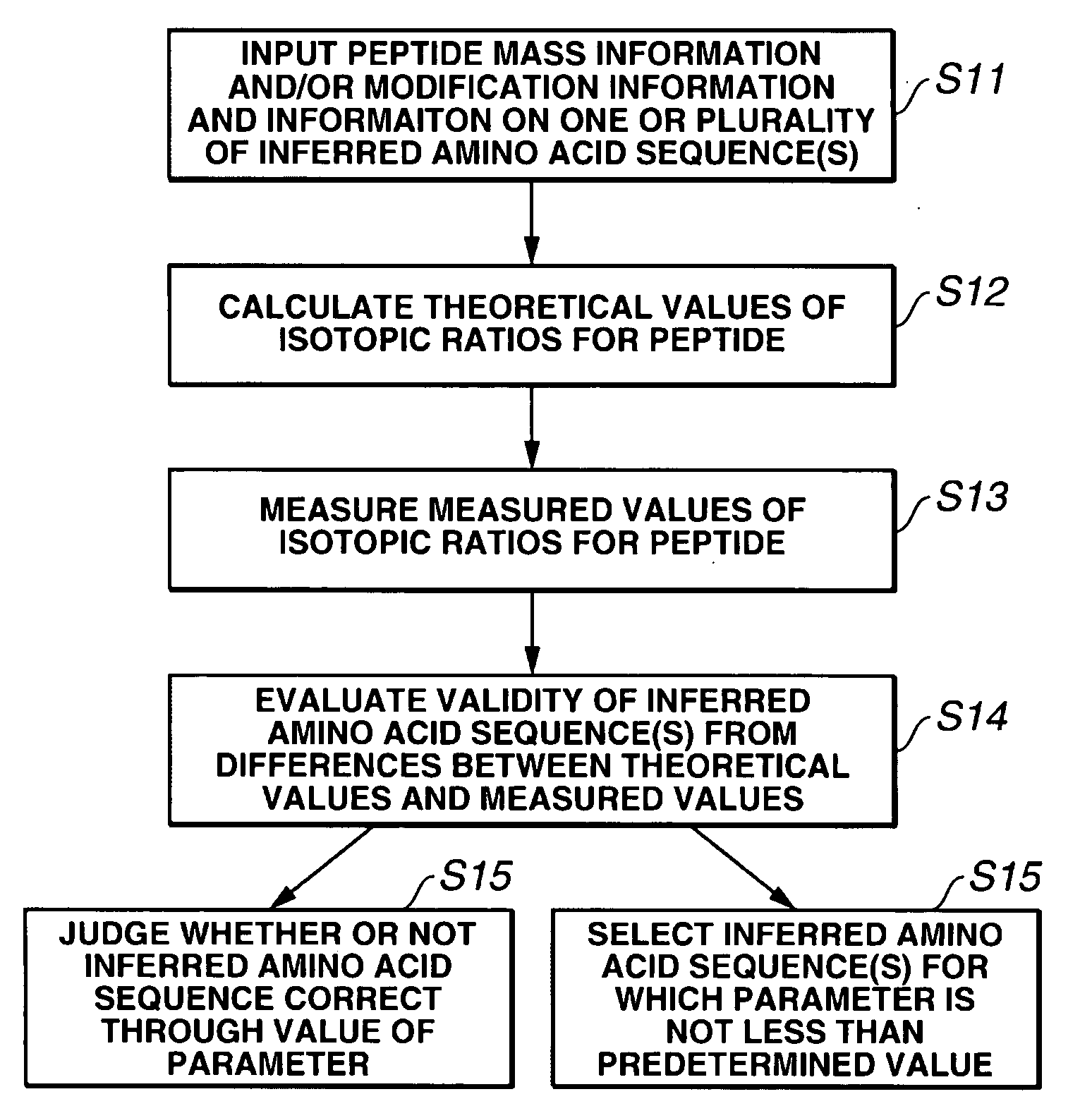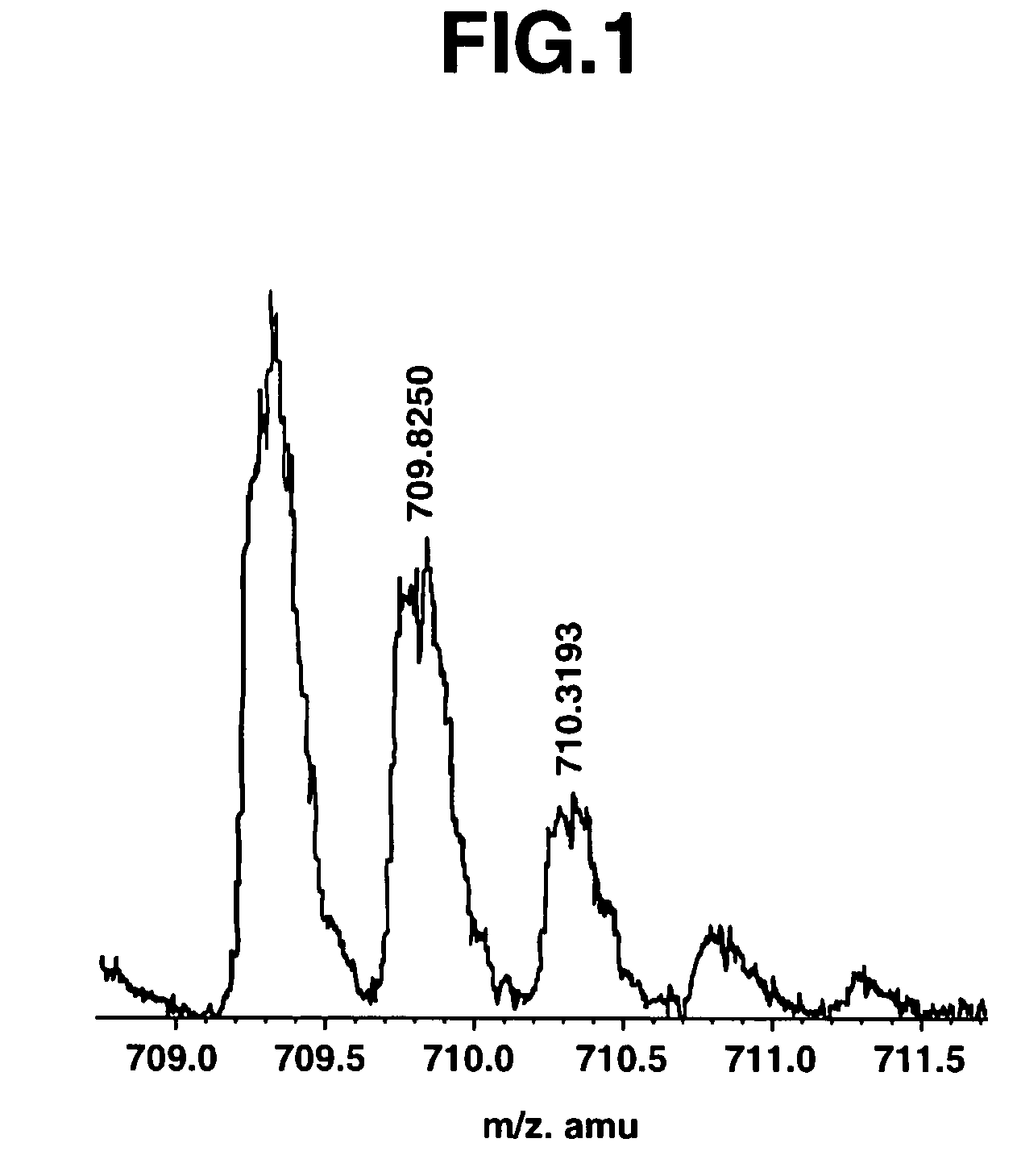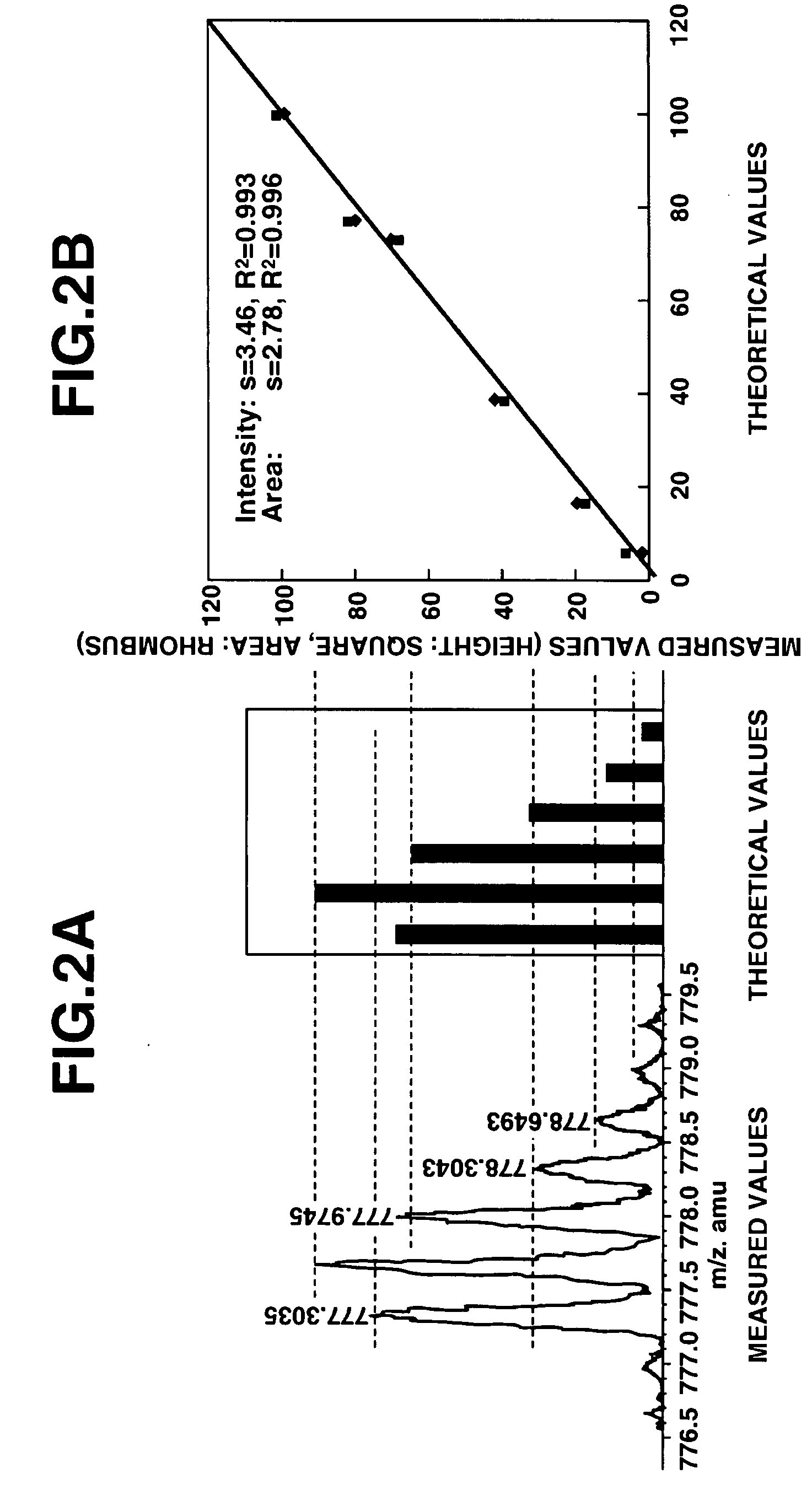Test of amino acid sequence constituting peptide using isotopic ratio
a technology of amino acid sequence and isotopic ratio, applied in the field of test methods, can solve the problems of difficult to completely eliminate, difficult to apply the pmf method, and fundamentally cannot cope with post-translational modification
- Summary
- Abstract
- Description
- Claims
- Application Information
AI Technical Summary
Benefits of technology
Problems solved by technology
Method used
Image
Examples
examples
[0075]The present invention will now be described in more detail through the following examples. However, the scope of the present invention is not limited thereto. Various modifications could be made by a person skilled in the art based on the description of the present invention, and such modifications are included in the present invention.
[0076]The following gives specific examples in which a database search was carried out based on amino acid sequence information obtained from MS, and inferred amino acid sequences were tested using isotope abundance ratios.
[0077]As a sample, the whole brain of a mouse was removed, and stored by freezing. The sample was homogenized using a Teflon® homogenizer, and undamaged cells, nuclei and so on were removed by centrifuging for 5 minutes at 500×g. Next, the supernatant was centrifuged for 1 hour at 100,000×g so as to prepare a soluble fraction. The protein mass was measured to be 3.12 mg / mL. The soluble fraction was taken as a fractionated samp...
PUM
| Property | Measurement | Unit |
|---|---|---|
| mass number | aaaaa | aaaaa |
| mass number | aaaaa | aaaaa |
| pH | aaaaa | aaaaa |
Abstract
Description
Claims
Application Information
 Login to View More
Login to View More - R&D
- Intellectual Property
- Life Sciences
- Materials
- Tech Scout
- Unparalleled Data Quality
- Higher Quality Content
- 60% Fewer Hallucinations
Browse by: Latest US Patents, China's latest patents, Technical Efficacy Thesaurus, Application Domain, Technology Topic, Popular Technical Reports.
© 2025 PatSnap. All rights reserved.Legal|Privacy policy|Modern Slavery Act Transparency Statement|Sitemap|About US| Contact US: help@patsnap.com



